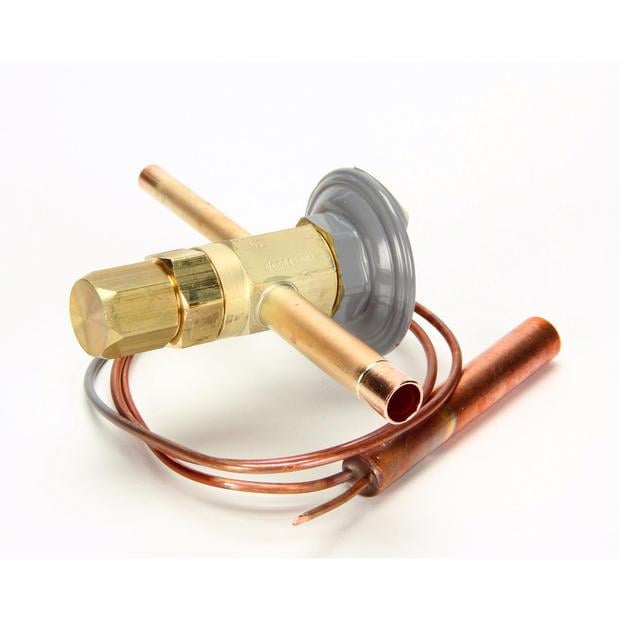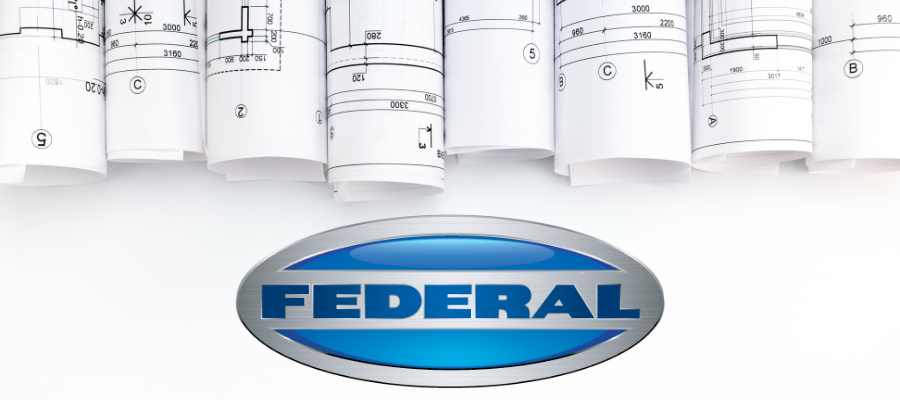Not all refrigeration systems are built the same. Now, that may come as a shock, but here at Federal, we want to ensure our merchandisers are built to the highest quality standard that our customers have come to expect. In this blog, we wanted to get technical about the techniques and systems used to build our display cases.
TXVs vs. Capillary Tubes
All refrigeration systems work by moving heat from inside the area to be cooled to the outside environment. This is done by circulating refrigerant throughout the system which transfers the heat. One of the critical components of a refrigeration system is the component that regulates the flow of refrigerant that enters the evaporator. The evaporator provides the cooling function inside a refrigerated merchandiser. The evaporators job is to convert the refrigerant to a vapor state thereby providing a cooling effect inside the merchandiser. The image below shows a typical refrigeration system, with the location of a refrigeration valve shaded.

Manufacturers typically have two choices when considering a regulating device. One is a capillary tube and the other is a thermal expansion valve (TXV). Each has its own unique advantages and disadvantages. The capillary tube consists of a simple, small diameter copper tube like the one pictured here.

It regulates the flow of refrigerant based on the temperature and pressure of the refrigerant and capillary action to pull the refrigerant through. The major advantage of using a capillary tube is lower cost and simplicity. The main disadvantage of a capillary tube is the response rate when temperature conditions change. This could be due to food being added, store conditions changing due to high traffic, or the location’s HVAC system setting changes.
The slower response of a capillary tube system can affect food freshness and shelf life of products when merchandising food products. Capillary tube systems are typically used on lower-end refrigeration systems where cost is an important design factor.
A thermal expansion valve, shown below, consists of a sensor that monitors the temperature of the refrigerant and controls a mechanical valve to regulate the flow of refrigerant into the evaporator. The main advantage of a TXV is quicker response to changing environmental temperatures or loading of product. This means that there are smaller swings in temperature inside the merchandiser, so foods stay fresher and last longer.

An added benefit is that because there is smoother regulation of the refrigerant, the compressor life is enhanced compared to using a capillary tube. This means longer life for the equipment and lower maintenance cost. The main disadvantage of the TXV is the higher cost due to the number of components.
At Federal Industries, we strive to provide refrigerated merchandisers with the highest reliability and longest life that enhances food quality, so we use TXV’s on all of our products. Check out our merchandisers to see how they can help you merchandise your products and keep them fresh so that you can maximize your store’s profitability.



